A Time for Discovery
Like Don Quixote, I’m going full tilt at windmills.
In this first newsletter of 2025 (the most science fiction sounding year so far, a title previously held by years 1984, 2001 and 2019), I’d like to share how I’m evolving my art practice. I’ll also look back at some of the paintings I’ve learned from the most.
But first, let me start with a confession of sorts.
Who, Me?
This might come as a shock to some of you (okay, maybe not), but I’m not the intuitive, messy, free-spirited kind of artist. Nor am I the tortured, brooding, genius kind of artist.
I’m the “just as surprised as you are” kind of artist.
Anna’s Hummingbird, Watercolor, 8x10 in.
This was the first time I tried painting tiny, iridescent feathers. I tested four or five methods before settling on a mix of two — (1) painting the underlying gradient of an area first, then adding in the shadows for each feather (upper head) and (2) painting individual feathers that needed more differentiation or precision (neck area).
Because I kept having to lift paint whenever a method didn’t work out, the colors aren’t as bright and the lines aren’t as clean as they could have been. But I’m happy with my hummer, because its faults remind me of its lessons.
I tend to be methodical, analytical and driven by outcomes. I will often focus on my interests to the exclusion of the rest of the world. Wonder isn’t enough; my curiosity demands answers. I would have been voted least likely to succeed at interpretative dance and most likely to succeed at designing efficient systems. If I sound like a lot of fun at parties, you need to read this paragraph again.
No wonder I gravitated towards science and technology.
Yes, Me
Still, I’ve always liked to create things — tiny doodles that perched in the corners of notebooks, short stories that wouldn’t be read by anyone else, nonsensical jingles that only my dogs appreciated… though I could be reaching on that last part.
Dolphin Series, Various Mediums, 7x5 in.
I painted a dolphin chasing a shoal of fish many times using different combinations of mediums. Here are four from the series.
This experiment helped me figure out how my wet and dry mediums looked and behaved during my early days of learning. Using the same reference photo simplified the decision-making process and made comparisons easier.
From top left, clockwise: 1. Watercolor and Gouache, 2. Watercolor and Graphite, 3. India Ink and Watercolor, 4. Neocolor II Watersoluble Pastel and Colored Pencil
Then came… yes, the pandemic. I began to take art seriously. Seriously seriously. I applied myself to my newfound hobby like I was trying to get into Harvard Medical School, if Harvard Medical School also handed out art degrees.
The Good Side of Serious: I loved making things with intent and rigor. I loved researching art materials and their properties.
I read about color theory during morning walks with my dog. I watched tutorials late into the night so I could try what I’d learned the next day. I bought paints, swatched colors, cut papers down to size. I felt like a mad scientist and it was exhilarating, even when things went horribly wrong.
“Drifting in the Dark,” Acrylic Ink and Watercolor on Strathmore Mixed Media Board, 10x8 in.
I started this painting, completed the background first, then stopped... because I realized I had NO idea how to paint a jellyfish using watercolors. After a bit of practice, I finally summoned the nerve to add a single jellyfish one month later. I used an angled flat brush to create the curve of the body, with white paint only loaded on one side of the brush.
The background is still my favorite part, though. I created the lighter organic shapes with white acrylic ink and some granulating medium.
The Bad Side of Serious: My immediate preference is to do the best I can with every painting with a goal of making the final result appealing to me. This led me to increasingly favor tried-and-true methods and materials, because those would obviously yield the best results. But I ended up specializing too soon, before I gave myself the chance to go really wide and understand the boundaries of what was possible.
Why is Blank Paper Like Moby-Dick?
“You shall now commence having mandatory fun,” an imaginary voice booms as I stare helplessly at the white expanse of my paper.
Everyone talks about how important play is. Surely, this must be the antidote to over-seriousness. I bought inexpensive sketchbooks and curated a simple kit to help things along. But play often felt too open and aimless, and the harder I tried, the less it seemed to work. For a while, play became my white whale.
“Contemplative Groundhog,” Neocolor IIs on Wood Pulp Paper
This painting took comparatively little time and effort because it was a sketchbook exercise where I was mainly interested in learning how the medium flowed. It’s one of my favorites from 2024.
But I’ve found it difficult to recreate this style, because the moment I start fussing and caring about the result, I lose the fresh lines and brushwork.
Stranger in a Strange Land
It turns out that play wasn’t the wrong notion… it was just the wrong framing for me. Because when I started calling it “discovery” instead, my goal-loving, answer-seeking self became much more engaged and motivated. Brains — it can’t just be mine — are weird like that.
Discovery means shifting my mindset from “How can I make this painting the best it can be?” to “How can I use this painting to uncover things I didn’t know before?”
This question can take other forms. For example: “How can I make this process interesting and different?” Or “What crazy things can I make my materials do in combination?”
Or simply, “What is the one new thing I will try today?”
I realize this might lead to confusing, underwhelming or even ugly work, at least more so than before. I’m prepared to be discouraged at times. But I’ll also be exploring new mediums, one of my favorite, non-mandatory fun things to do.
I can’t say how long this phase will last. Maybe it’s not a phase at all.
My sketchbooks are ready.
“A Tree Like the Sea,” India Ink on Aquabord, 6x6 in.
What makes a tree, a tree? After countless attempts, I’m still struggling to capture the ineffable quality of tree-ness. This one, which I painted on Aquabord, might have come close.
Aquabord is a product created by Ampersand, and it’s unlike any watercolor paper… because it isn’t paper. It’s a hard board coated in clay. That means it won’t ever buckle or warp, but the surface texture does take some getting used to.
I find Aquabord ideal for paintings where I need to use water fearlessly. I don’t know if I could have painted a tree like this using paper.
As always, thanks so much for reading and commenting. I especially appreciate this community’s support after I had unexpected surgery late last year. I haven’t been able to make as much art as I wanted, but I’m finding my rhythm again. It’ll just be to a slower beat.
I also wanted to say how sorry I am… for all of you who are going through the unimaginable right now. I hope that kindness finds you wherever you are.



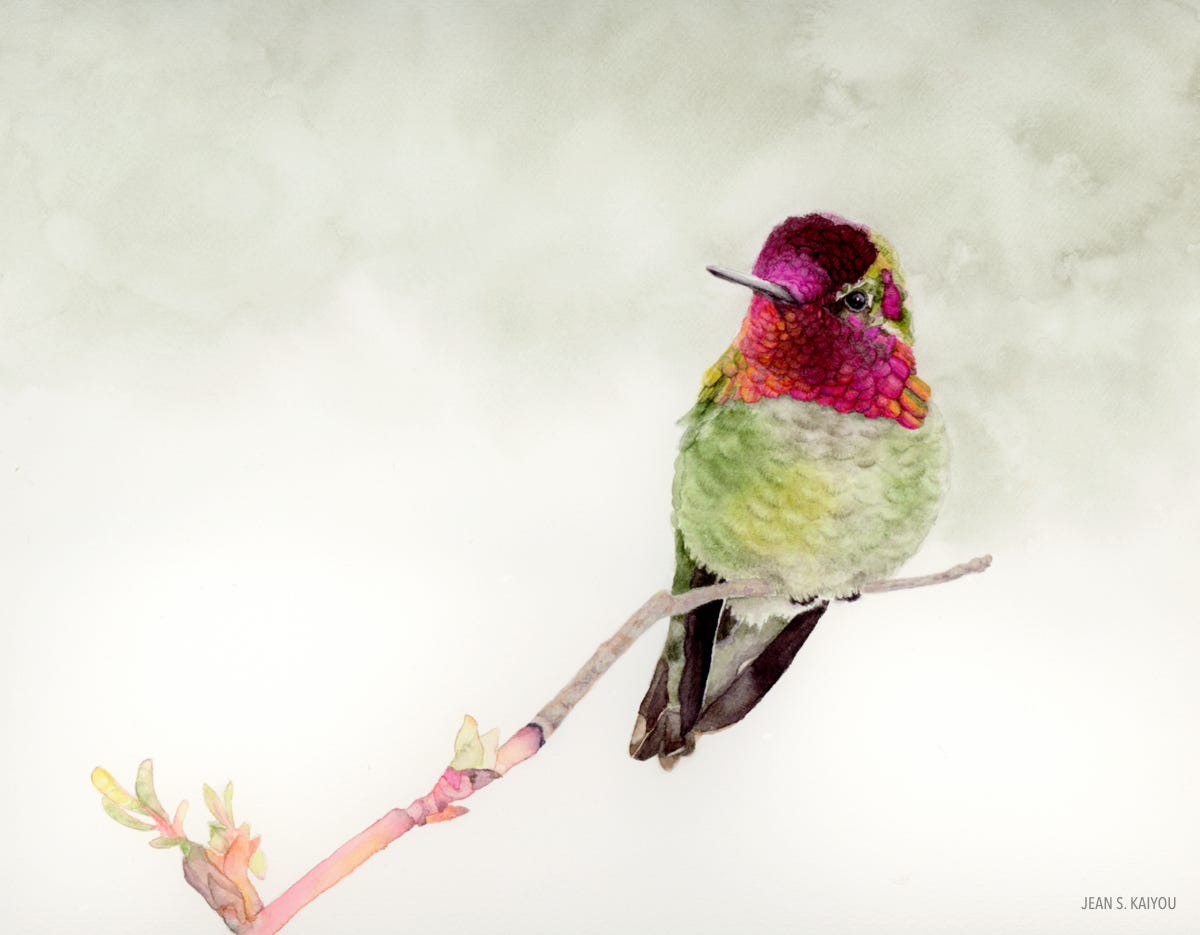
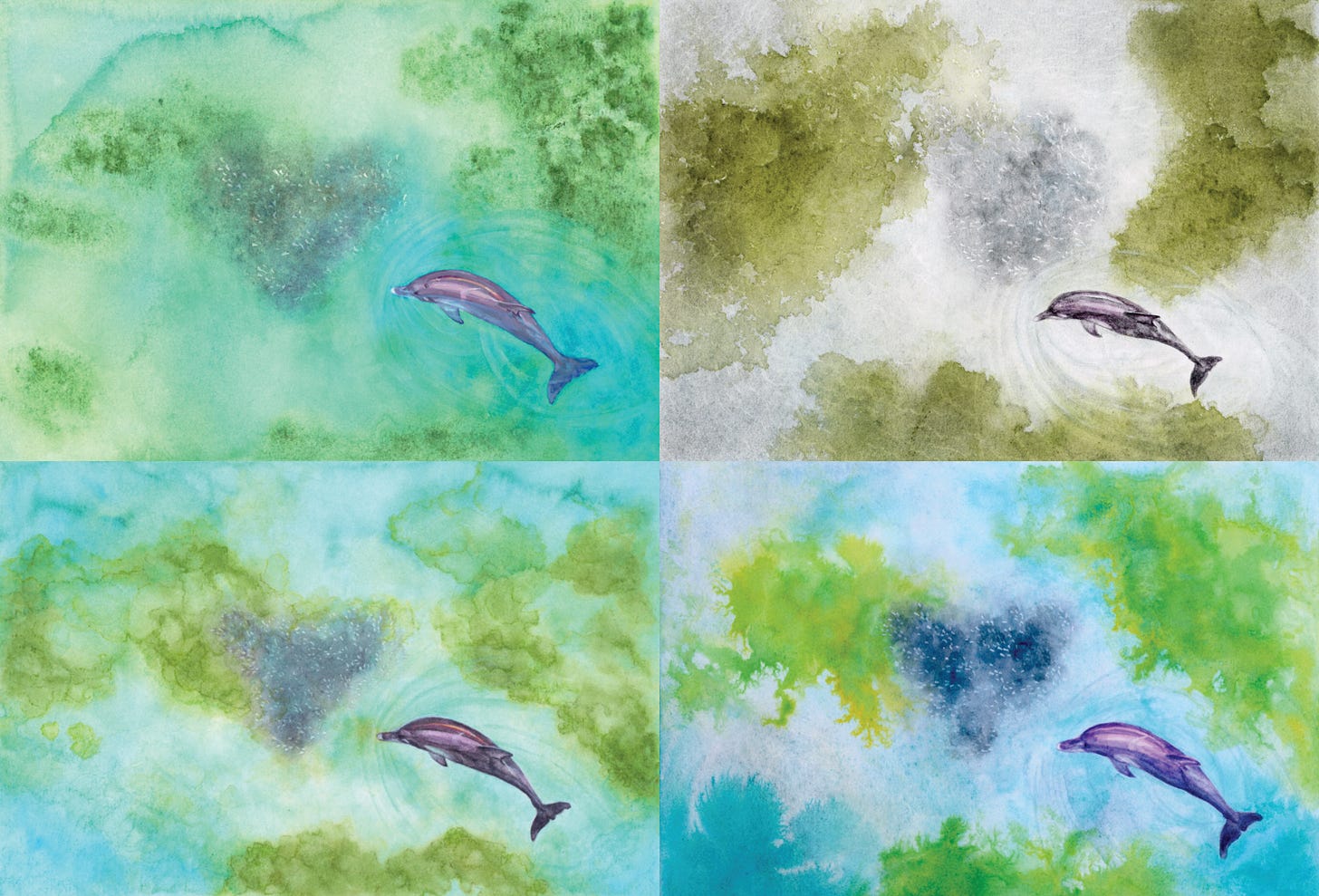
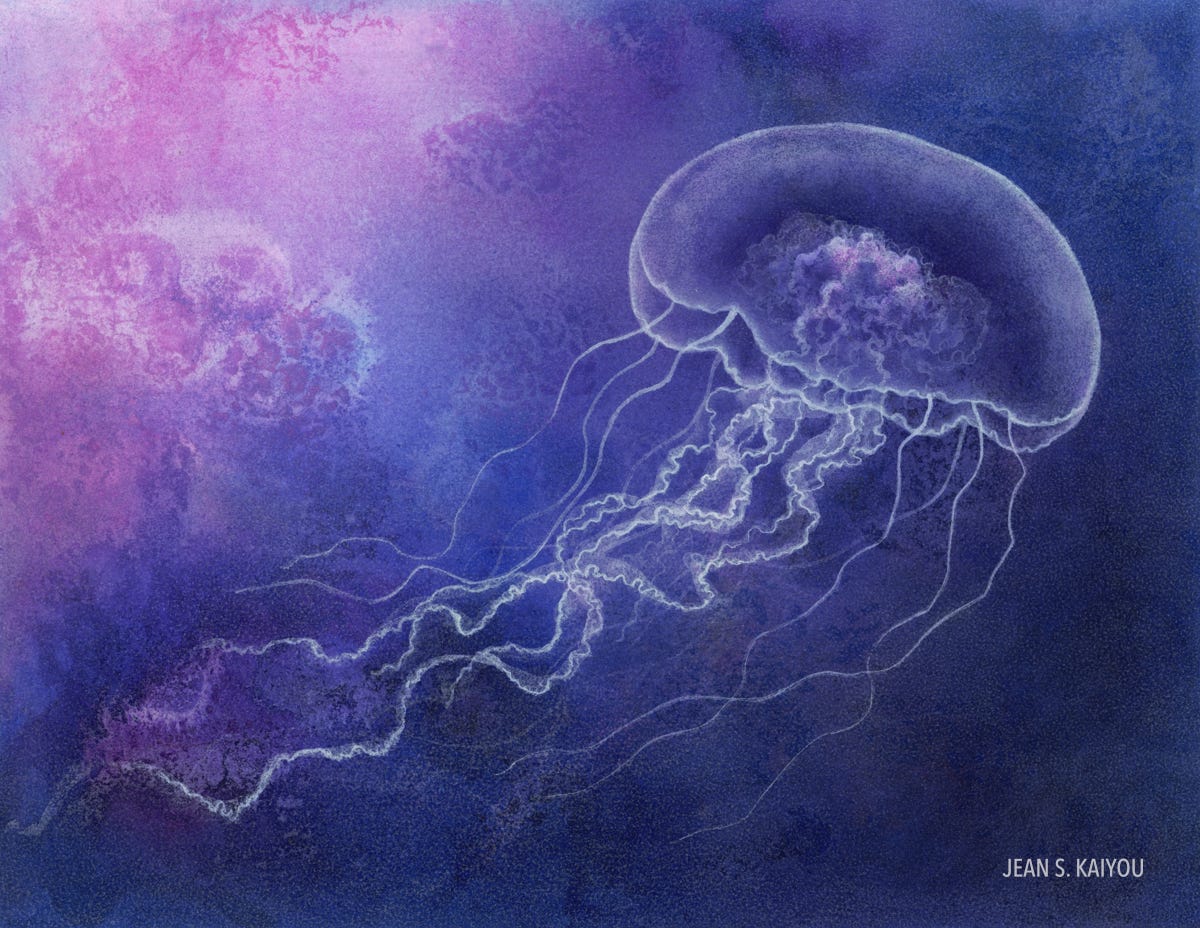
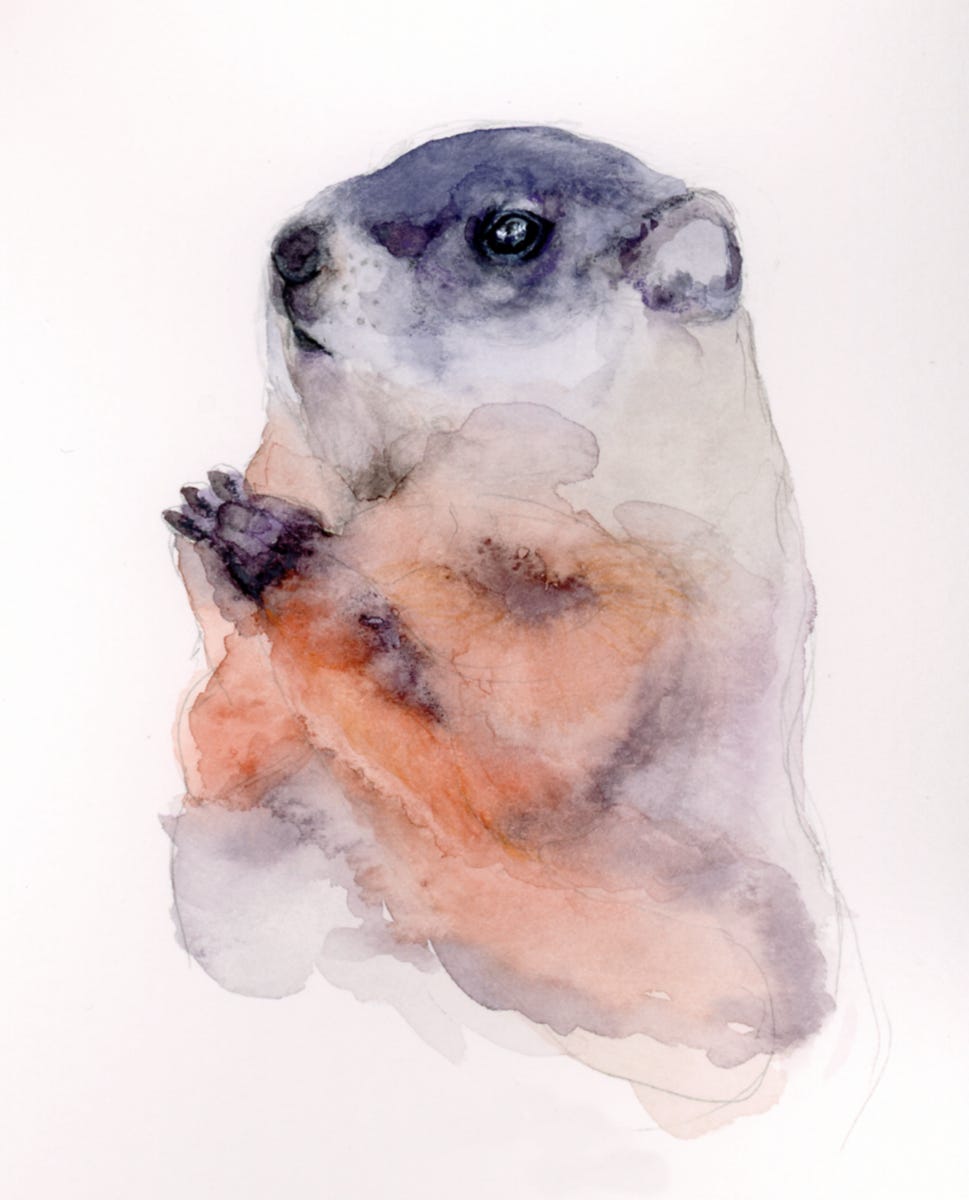
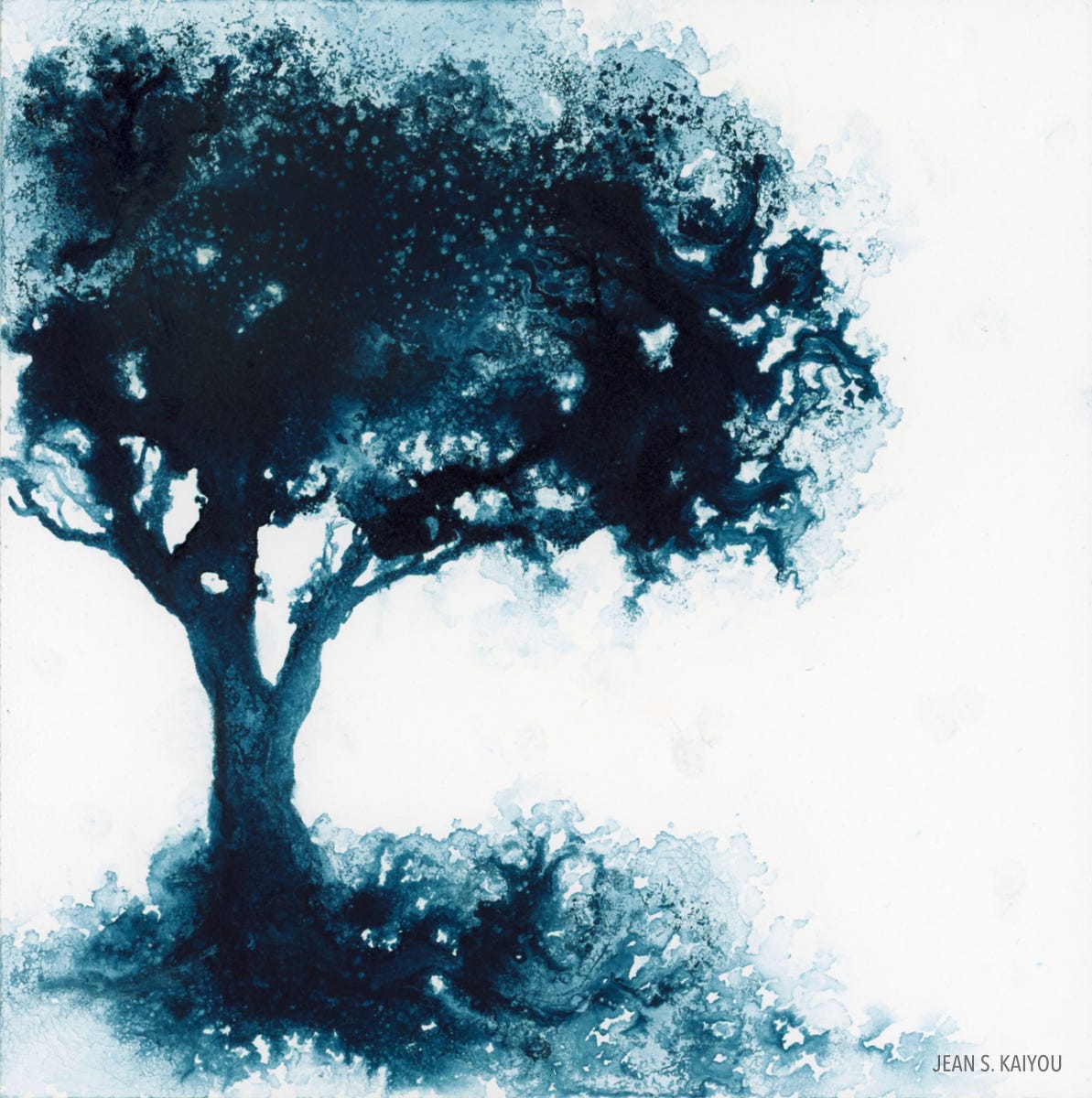
I love that jellyfish!
I'm so enjoying your process! Interesting to read, and the results are wonderful to view. Thank you for letting us "look over your shoulder".